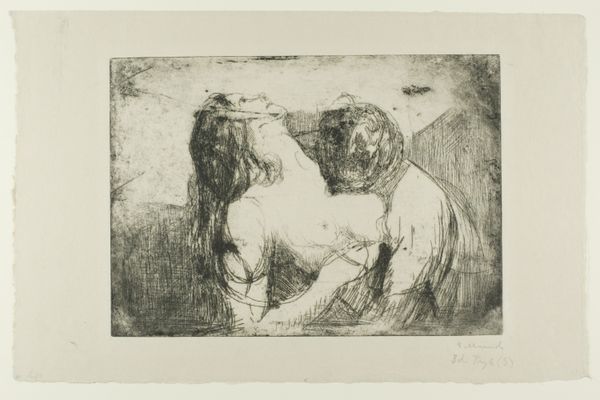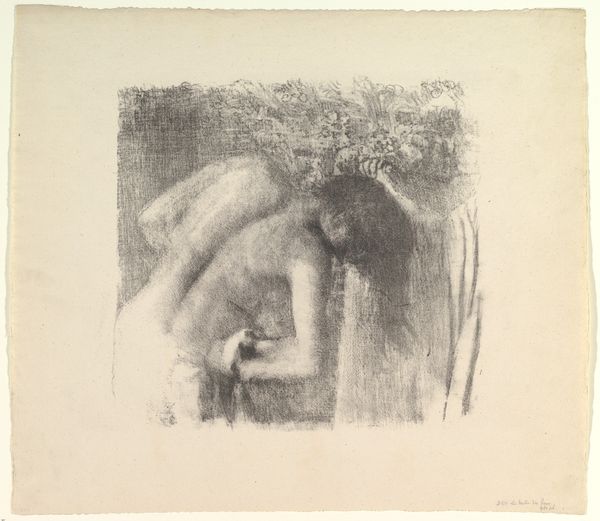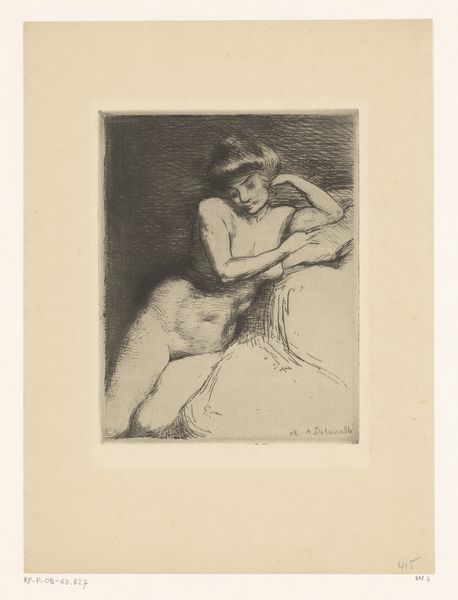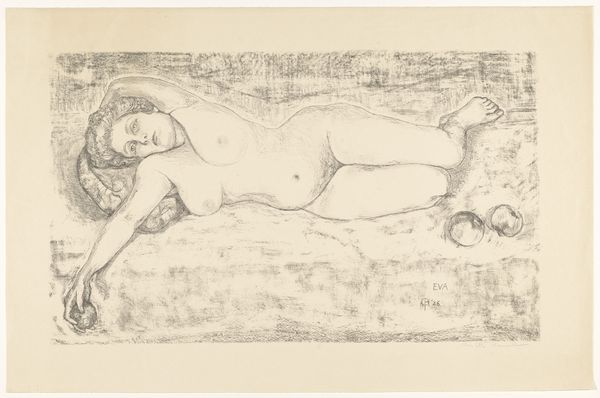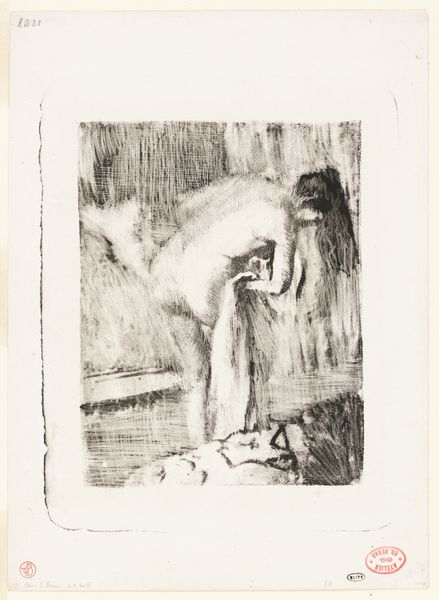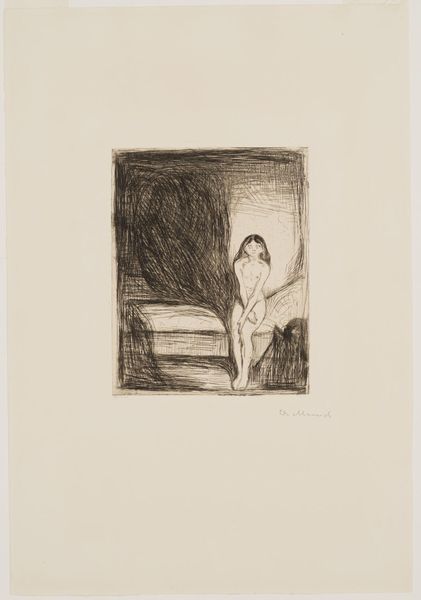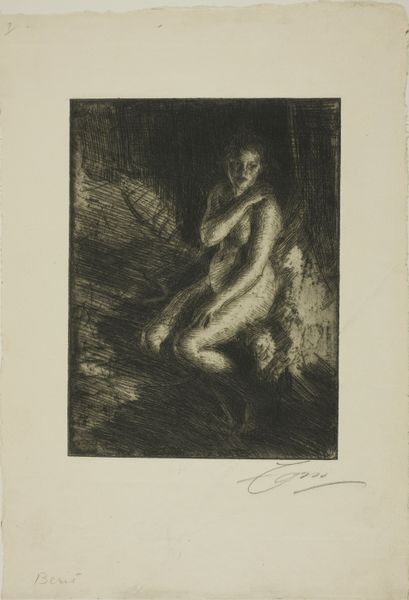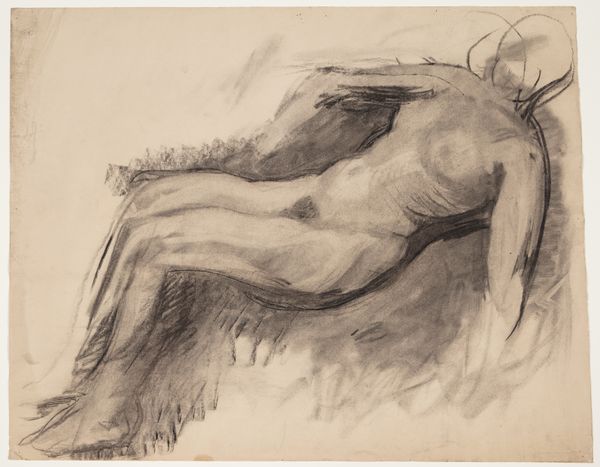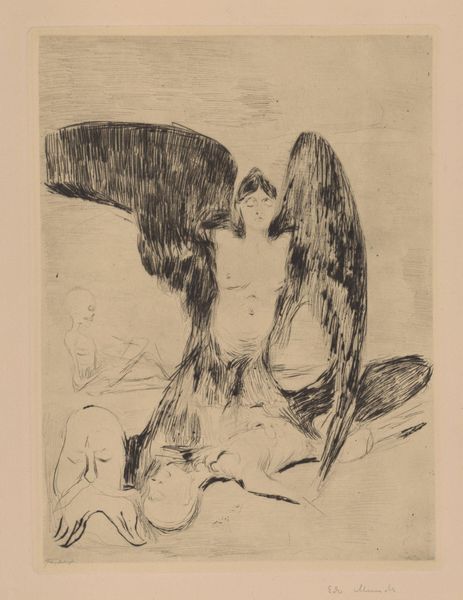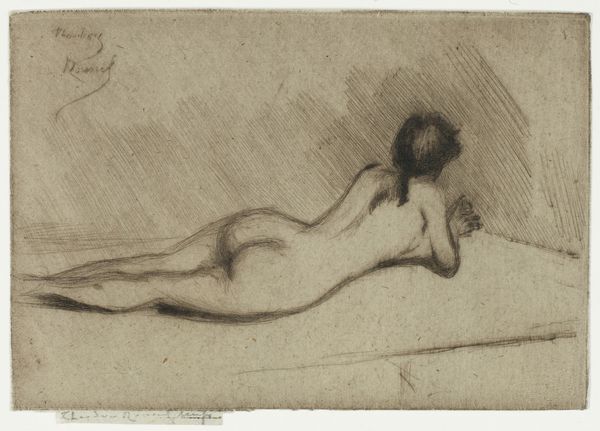
drawing, print, etching, paper
#
drawing
# print
#
etching
#
paper
#
expressionism
#
symbolism
#
nude
Dimensions: 150 × 230 mm (image); 158 × 237 mm (plate); 249 × 355 mm (sheet)
Copyright: Public Domain
Curator: Munch's 1913 etching, "Secret," really strikes a nerve, doesn't it? A kind of shadowy vulnerability in the nude figure and the partially obscured figure looming to the left...it almost feels intrusive. Editor: It does. Looking at it, my immediate reaction is its almost painful intimacy. The limited tonal range, the scratched lines... it amplifies the raw, unfinished feeling. One thinks immediately about the manual labour of print making as process and production. It's an emotionally loaded, visually unresolved experience. Curator: Considering Munch’s well-documented struggles with anxiety and tumultuous relationships, the very materiality you cite becomes intensely suggestive. How the paper itself might bear witness to the emotional turmoil involved in the artwork’s production and what were the labouring conditions under which such personal experience became, in a sense, "public" via an artistic etching? Editor: Right, the visible marks speak to the labour—both physical and emotional—that's inseparable from its creation. We need to see art historical tropes in light of social history, asking questions like "How has artistic production traditionally separated masculine creative agency from feminine artistic labor?" Can "secret" refer to hidden forms of domestic labour, say? Curator: Munch was undeniably influenced by the symbolist movement which, during that period, challenged social conventions regarding sexual relationships. He often portrayed women in ways that subverted traditional portrayals. It is a question whether we should read the relationship between the figures not so much as intimacy but in the tradition of female sexuality displayed and exposed... the "secret" that needs telling is really one of gender politics. Editor: And it's also important to understand "Secret" within a larger history of gender and labor that is imbricated in art practice and theory itself. Is Munch really interrogating social assumptions or reinscribing power dynamics from a patriarchal structure that objectifies the figures in the production of an erotic print? Curator: An intriguing point that brings an urgency and enduring topicality to this work! Editor: Indeed. Ultimately, it prompts one to reconsider how we view vulnerability and complicity within representational structures of historical processes.
Comments
No comments
Be the first to comment and join the conversation on the ultimate creative platform.
